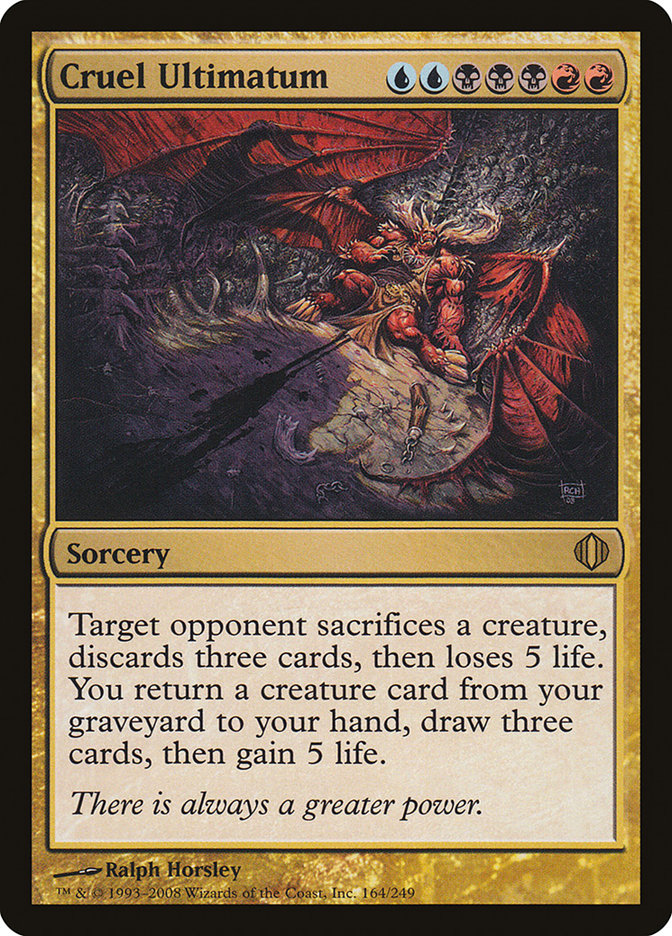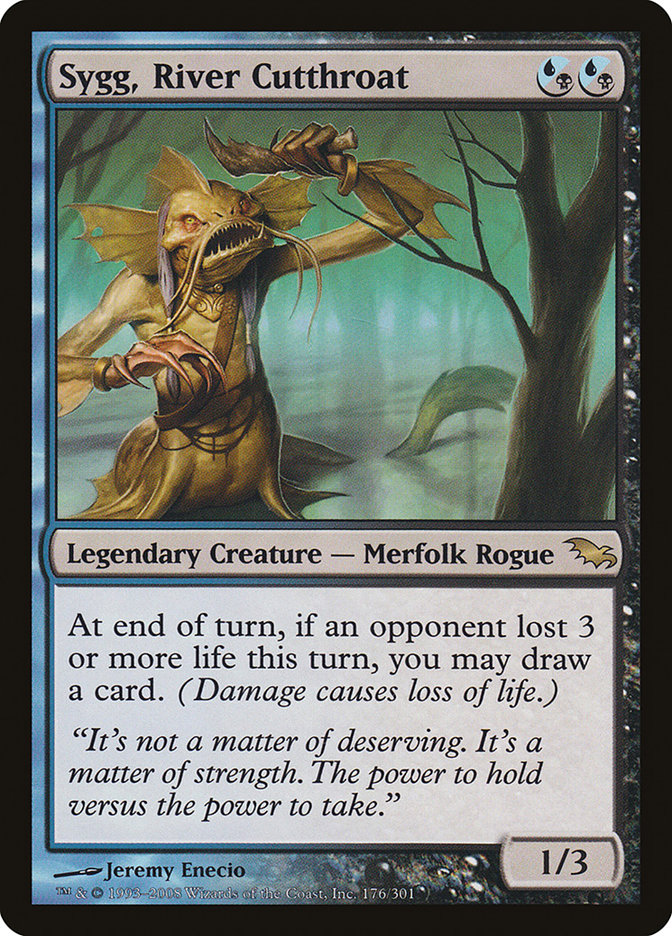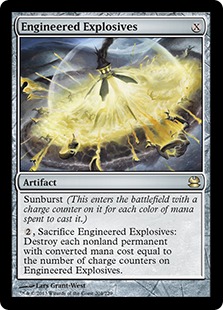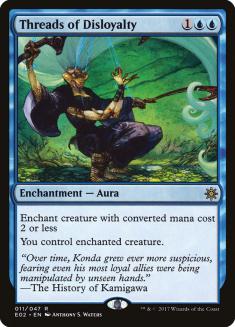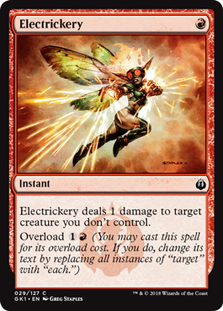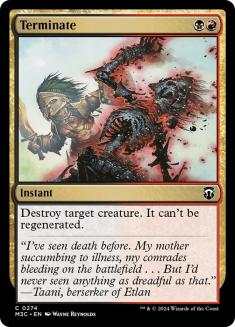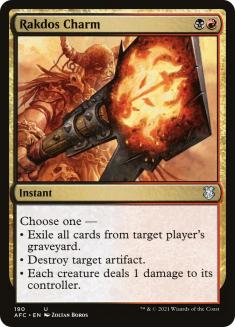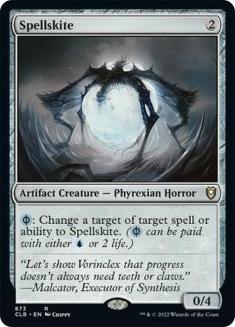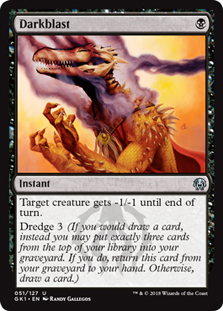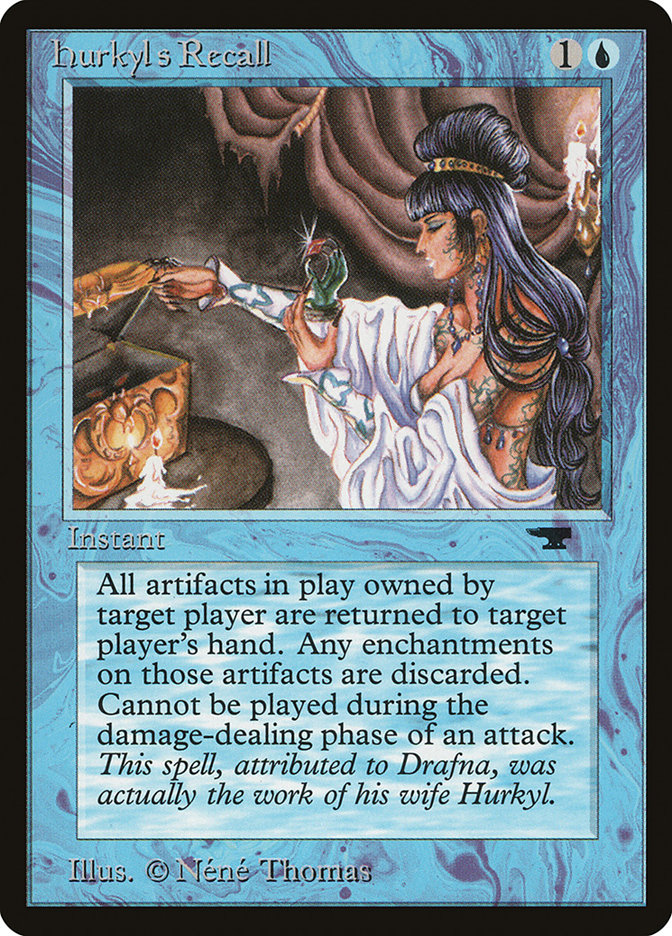Grand Prix Minneapolis was an awesome experience for many different reasons. I think the most important one for me was how much I learned about both
Standard and Modern. Both of these formats are, in a sense, ‘new,’ with Journey into Nyx changing the landscape in small ways. While I didn’t do very well
in the main event, I played in as many sides as I could find time for.
Here is the rundown of my weekend.
Friday – Planes Talkers
The Friday night of the Grand Prix, I hosted a really cool event. It was a panel discussion on Modern and Magic, and it was called Planes Talkers. The
panel consisted of some really great Magic players – Brian Kibler, Craig Wescoe, and Shaun McLaren – and also included our event’s Head Judge, Toby
Elliott. It was a really great collection of people, and we filled the VIP Lounge of the Grand Prix with an awesome audience who had great questions.
One of my favorite moments of the panel: I asked the audience to raise their hands to indicate what kind of deck they were playing. When I got to
“midrange,” out in the crowd, a mischievous Willy Edel made eye contact with me, raised his hand just the tiniest amount, and smiled. I didn’t need him to
raise his hand to suspect he’d be playing Tarmogoyf and Thoughtseize, but in that moment, his faux-slyness just made me laugh.
Unfortunately, due to technical issues, the first twelve minutes of the panel are lost, including some awesome comments from Toby Elliott about the recent
floor rules changes and some very insightful comments from Shaun McLaren about playing control in Modern. In addition, the video skips twice, losing about
ten seconds each time, in the first five minutes. Still, there are plenty of moments of insight, and I’m looking forward to the chance to do another Planes
Talkers at another big event.
Here is the video of the event:
I think you’ll agree that it was an awesome conversation.
Friday – Brian Kowal Birthday
After the event, I headed out with my dear friend Brian Kowal for a birthday dinner. He had thrown an incredible catered birthday party at the local game
store in Madison the night before, but I hadn’t been able to join up with it because I had headed to Minneapolis to get preparations done for Planes
Talkers. Thankfully, he kindly allowed me to buy him dinner.
At dinner, we were joined by our friend Rob Castro (the first Wisconsin State Champion) and my friend Carrie. We did a lot of talk about a really
cool deck that they had brewed up, talked about Modern in general, about Planes Talkers, and just had an awesome conversation and meal. After, it was time
to register decks, and with only forty-five minutes to spare before the online deck registration deadline, I had to choose.
Friday – Last-Minute Deck Decisions
I brought a lot of Magic cards with me. Usually, I don’t do that. Usually, I have my deck really well determined before the event. This wasn’t the case at
this event.
A part of it was that I was undecided between two different Grixis decks: the Cruel Control deck and Grixis Delver. They both held a lot of appeal for me,
but I was deeply struggling between the fundamental differences that they provided. First, though, they did have a set of things in common that I loved:
These are a lot of powerful cards to have access to from both the main and sideboard.
The real question about the difference between these two decks is not this:
but this:
In the end, I was trying to balance the cost of the extra pain of Dark Confidant in an already pain-heavy mana base versus a deck that was mostly going to
just keep saying ‘no’ until a Cruel Ultimatum (most likely) put the game away. A part of the problem with running a deck like Cruel Control, but without
access to a good Dark Confidant-style effect, is that you could get ahead early and the opponent could just sneak back in. Dark Confidant, on the other
hand, always felt like he put the game away, at least versus those decks that aren’t going right for your throat. Conversely, dedicating cards to actually
killing your opponent, running cards like Serum Visions to enable your Delver…all of this takes a lot of room.
My final version of Cruel Control looked like this:
Creatures (7)
Lands (22)
Spells (31)

There was a lot of modeling going on with this list.
If you’re not sure what ‘modeling’ means, it means to take other successful decklists and use them as a basis for comparison to understand what
you need your deck to do. For this deck, it was largely comparing them to previous Cruel Ultimatum decks from years past, along with current Jund lists,
and Shaun McLaren’s UWR Control list from Valencia. This is only a few cards different than what I had come to in the last few weeks, and every change felt
like it was an improvement.
The other deck was actually an update on a
deck Zac Hill put out into the world over a year ago. I hadn’t quite given it enough props when it was released, but, damn, look at these spells:
That, my friends, reads like a collection of Legacy cards. In a sense, this was a “murderers’ row” of cards, and I started jokingly calling it that in
playtesting.
Creatures (17)
Lands (18)
Spells (25)

Zac writes:
What is the core engine of the deck?
Basically, all of these cards are absurd, and they happen to all be really absurd in tandem with one another.
Now, obviously in current Modern, Deathrite Shaman is not an option. This definitely affected how I chose to evolve the deck, and ultimately, it is
possible that without Deathrite Shaman, no amount of finagling will make the deck work properly. I’d been tinkering with it, though, and had a good amount
of success with it online. Here is where I ended up:
Creatures (14)
Lands (20)
Spells (26)

Most of the final changes happened as the result of a lot of conversations. I spent time talking to Ronny Serio, Zac Hill, Jacob van Lunen, and Jeff
Hoogland, with a little bit of input from Ari Lax and Brian Kowal. The inclusion of this guy was one of the best things to fill a hole in the deck:
Zac and Jacob particularly loved this addition, and it was Zac who ended up talking me into the second copy of Sygg, River Cutthroat in the board. Both it
and the maindeck copies would end up being great for me. I felt ready to battle.
Saturday – The Main Event
Well, I could spend a lot of words on this, but the long and the short of it can be boiled down to this:
Round 1: Bye [1-0]
Round 2: Bye [2-0]
Round 3: Affinity, L 1-2 [2-1]
Round 4: Affinity, W 2-1 [3-1]
Round 5: Through the Breach, W 2-1 [4-1]
Round 6: Affinity, L 0-2 [4-2]
Round 7: Affinity, L 1-2 [4-3 drop]
As I reflected about the day, I thought about what it was that had happened to me. I’d played against Affinity, the aggressive deck I most expected to see,
a total of four times, and had only managed to beat it once. What had happened?
The last card that I’d placed in my sideboard was a Sword of Feast and Famine, as a means to really help myself against more controlling decks and
have a powerful Sword against Jund. While there are good reasons to play any number of different Swords in Modern, Sword of Feast and Famine was the one to
choose if your targets were specifically control and Jund/Rock, and also be useful versus combo.
But, despite this being the right Sword, did I really want to be having that many weapons against, say combo? What am I bringing in against
Affinity?
This may look like a lot of cards (ten!), but these are really a lot of low-impact choices. The deck really needs one or two incredibly high-impact cards
to be able to truly get to that point where Affinity might be a reasonable matchup. As it is, Rakdos Charm is fine, but not great. Electrickery
can be incredible, but it can also just be dead. The thing that is clearly missing is the dedicated anti-Affinity card. And, truth be told, probably two of them.
Say, two of this:
The funny thing is, up until the week before the event, I’d had 3 Rakdos Charm, 2 Electrickery, and 1 Hurkyl’s Recall. Ultimately, I don’t know if that
configuration would have been enough, but I knew going into the event that I was weakening myself against Affinity, and I didn’t bat an eye. As
they say, “you make your bed, now lie in it.”
I think the core of this deck is pretty great, but I definitely fumbled on the final details of the deck build.
Sunday – Sunday Super Series Standard
I really want to go to the Super Sunday Series event in Seattle. This event looks awesome.
The first of them was won by Owen Turtenwald only a few short months ago, and from what I heard from basically every competitor, competing in this event is
amazing. Basically, every Sunday of a Grand Prix, the winner of the Sunday Super Series event gets an invite to the final event in Seattle to play for a
bunch of money, but also, just to have an all-expenses-paid cool trip to Wizards of the Coast headquarters. With only one competitor invited per Grand
Prix, you know this is going to be a small event, too.
The event is the brainchild of Alan Hochman (tournament organizer for Grand Prix Chicago), the event innovator who brought you the Sleep-In Special, Grand
Prix playmats, and a bunch of other cool things. I stepped away from UW Control to play Naya Midrange Aggro:
Creatures (24)
- 1 Scavenging Ooze
- 2 Aurelia, the Warleader
- 4 Ghor-Clan Rampager
- 4 Boros Reckoner
- 4 Voice of Resurgence
- 4 Stormbreath Dragon
- 3 Fleecemane Lion
- 1 Xenagos, God of Revels
- 1 Brimaz, King of Oreskos
Lands (22)
Spells (14)

I have to tell you, the number of times I heard this: “Huh… I guess I’m dead” from my opponents was awesome. I took people from 21 to 0, 18 to 0, and
even a mere 13 to 0 many times throughout the event, without them even thinking they would take a single point of damage the turn before.
A big part of this deck is the absurd amount of damage that you can do when you’re doubling the damage of something huge. In one game, I cast end-of-turn
Boros Charm (-4) and Advent of the Wurm, then untapped and cast Aurelia, the Warleader (16 trample/flying damage), prompting my opponent to spend several
minutes looking for a block that would save them before extending the hand.
That said, I did lose to two Sphinx’s Revelation decks. In both cases it felt a bit unlucky (triple Stormbreath Dragon in hand but only four mana vs. an
empty board and no counters, for example), but something has to be said for that result. Even if it was “unlucky”, I was asking for that fifth mana to be
able to do something relevant when another deck might not have needed it at all. Azorius Charm was an utter beating against me, because it turns out that
Advent of the Wurm does have a drawback.
I haven’t figured out how I’d like to tweak this deck yet. A big part of choosing this deck over my other Standard decks was just feeling like I didn’t
want to be casting Detention Sphere right now, largely because of Black Devotion with Green. The top Standard decks in the event, though, were all Sphinx’s
Revelation decks, so maybe I just have stepped too far out of the path out of fear.
I definitely still like this Naya deck; it felt incredibly powerful. I lost three times, though: the third loss was to a White Weenie deck (played by
Michael Heup), and that matchup felt almost unwinnable, so it seems likely, given that the deck lost to both the uber-aggressive and the
uber-controlling ends of the curve, that the deck needs a major revision.
Back when it was only held once a year, I won Wisconsin States twice. When it comes to Standard, generally, once a little time has passed to evaluate it, I
usually feel like I have a good sense of where to go. Aside from my Naya deck, I’d strongly advocate for UW Control, Burn, and Junk Midrange.
Here is my revised build for all of you hungry to take down a States with a midrange aggro deck. Enjoy!
Creatures (24)
- 1 Scavenging Ooze
- 1 Aurelia, the Warleader
- 4 Ghor-Clan Rampager
- 4 Boros Reckoner
- 4 Voice of Resurgence
- 4 Stormbreath Dragon
- 4 Fleecemane Lion
- 1 Xenagos, God of Revels
- 1 Brimaz, King of Oreskos
Planeswalkers (1)
Lands (22)
Spells (13)




